Fortuna et Virtu
a project reflecting on 'A Midsummer Night's Dream'

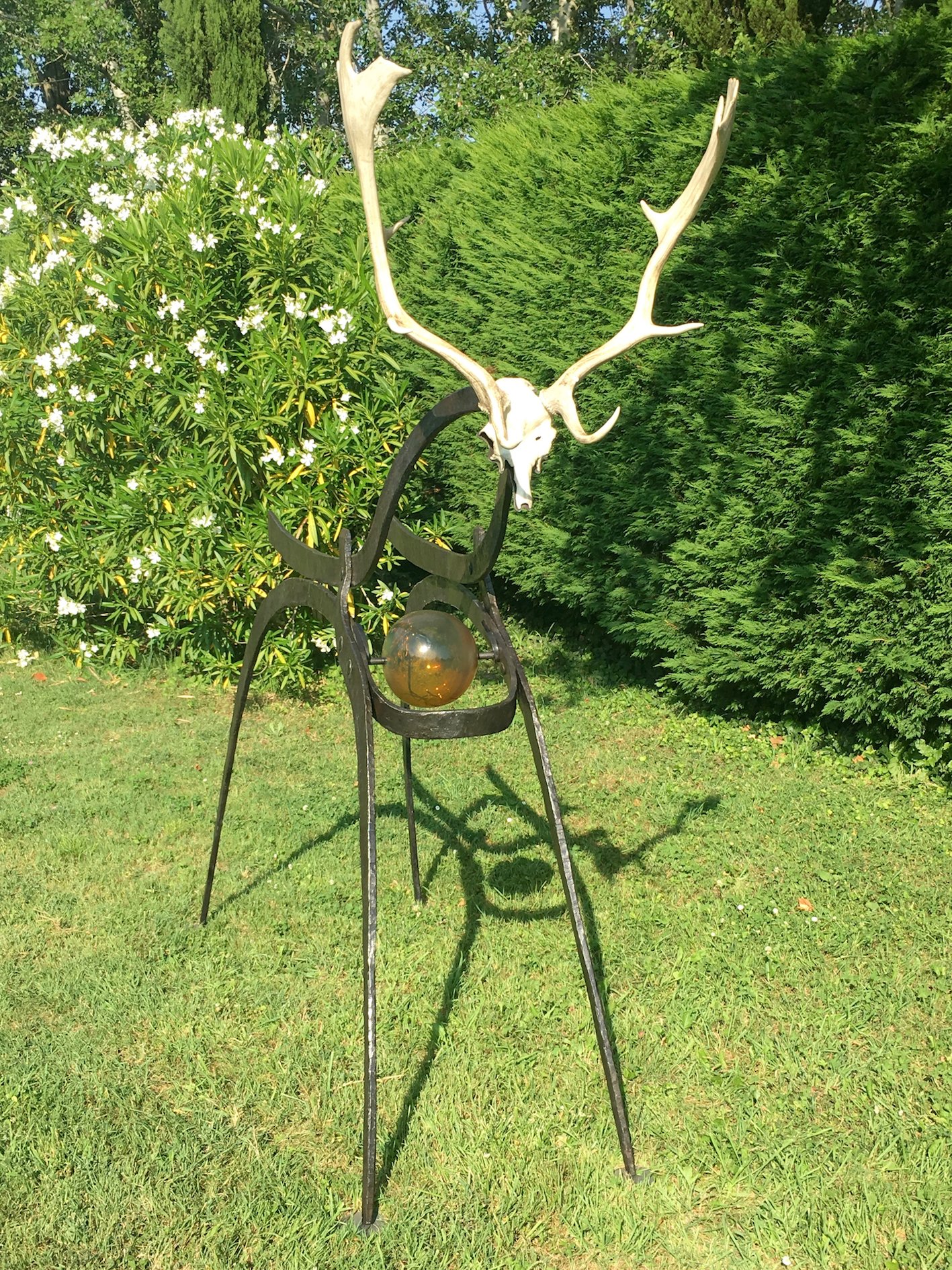

Introduction
In the shakespearian play, on a Midsummer’s night, four young lovers find themselves wrapped in the dream-like arms of an enchanted forest where spirits lurk and fairies rule. While a feuding Fairy King and Queen are at war, their paths are crossed by Bottom, Quince and their friends presenting a play within a play. Chief mischief-maker Puck is onhand to ensure that the course of true love is anything but smooth, and games of fantasy, love and dreams ensue in Shakespeare’s most popular comedy. All the while the preparations of a wedding are in full swing, Theseus, the powerful duke and ruler of Athens is to marry Hippolyta, the former queen of the Amazons.
The play combines mythology of Ancient Greece with elements of Renaissance England, set in antiquity in the wood outside of Athens. To the Elizabethans the period known as midsummer was not an idyllic time of year, but a dangerous time. The crops were out in the fields, but had not ripened yet. The harvest could be threatened by bad weather, which would lead in turn to rising prices, discontent, riots, social instability. Precautions had to be taken to appease the old Gods. Humans had to prepare against the odds of nature. On the eve of St. John’s day, it was thought that a portal opened up between the mortal and the fairy world and for the next few days until St. Peter’s day, fairies would flood the land creating mischievous havoc. Folk would hang garlands of midsummer flowers as vervain, corn marigold, and St John’s wort, around the byres of their cattle, or the cradles of their children, so the fairies would not swap them for changelings.
This play is so rich on so many topics:It’s prevailing themes touch on order and disorder, the balance of the rational and the irrational, the dichotomy of control and impulse; on reality and appearance; on love and marriages and the difficulty of relationships; the dominance of the male over the female; of the elite and educated class over the uneducated working class, of human order over nature; on creative imagination and its reliance on the unconscious, the magical, the mysterious. Nature is presented as a magical world in contrast to the orderly court of Athens. The moon plays an important role, reflecting change, disruption, unpredictability, romance, the magical mysterious, a journey. Sleep and Dreams take us to mysterious places, states of consciousness, states of innocence and vulnerability; they cause confusion and the blurring of boundaries between fantasy and reality. Magic represents the unseen, the unpredictable the irrational, the inexplicable.
The sculpture
Reflecting on the extraordinary shakespearian play, which is hilariously comic but at the same time so rich in symbolism, I wanted to create a sculpture that incorporated the above mentioned themes and motifs. My work in general is characterised by reflections on the dichotomy of masculinity and femininity, chaos and order, the attempt of human dominance over nature and the possible existence of an invisible parallel world. What I would like to offer is a see-saw like metal structure with deer antlers on one side and an amber-coloured glass sphere on the opposite side. Similar to the playground feature the ends can tip to one side or the other. The whole recalls a forest animal with blurry contours. It could be a four-legged mammal; it could be an insect. It could be a dreamlike appearance, gone in the next blink of the eye.
Picture gallery
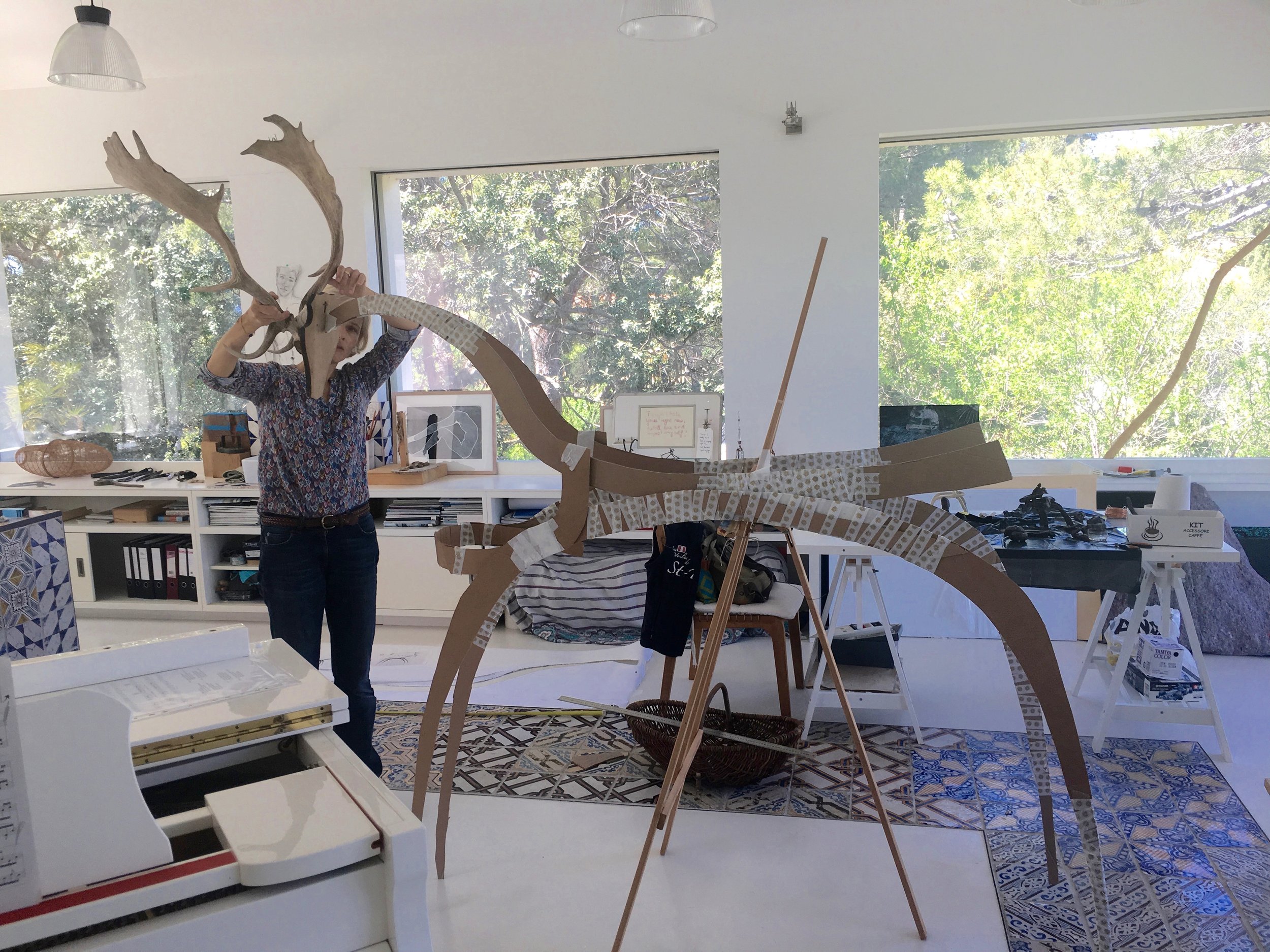
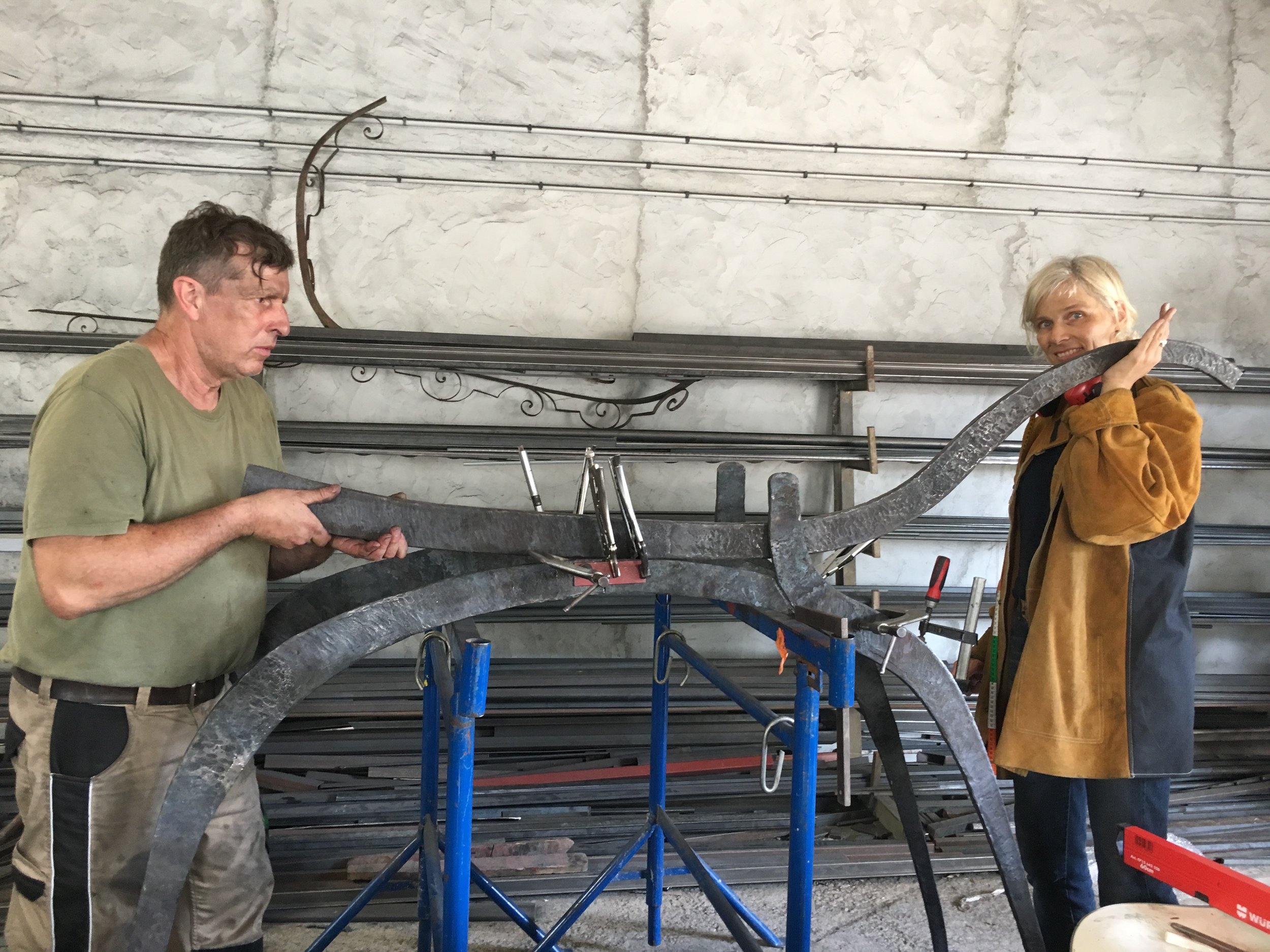
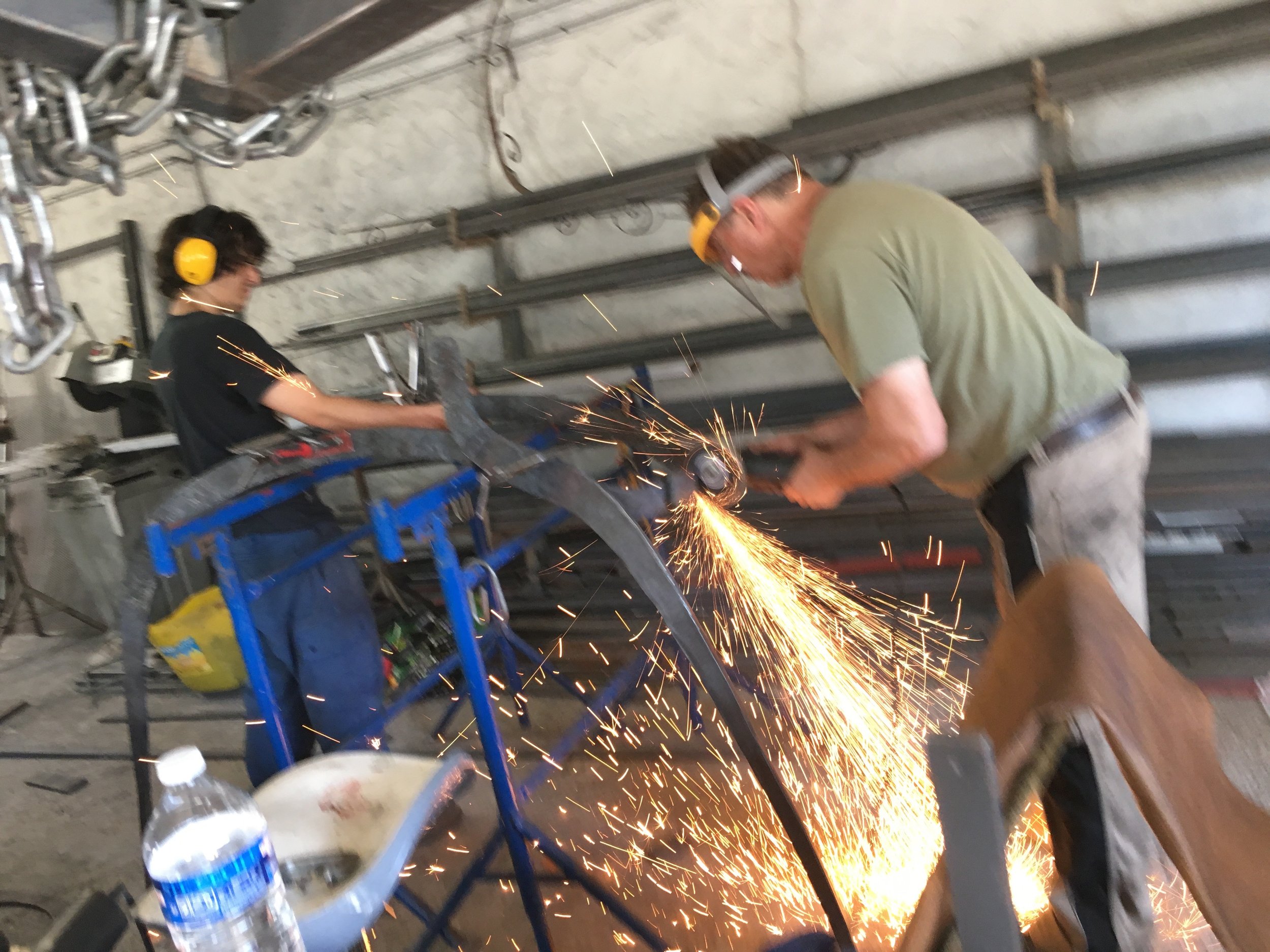

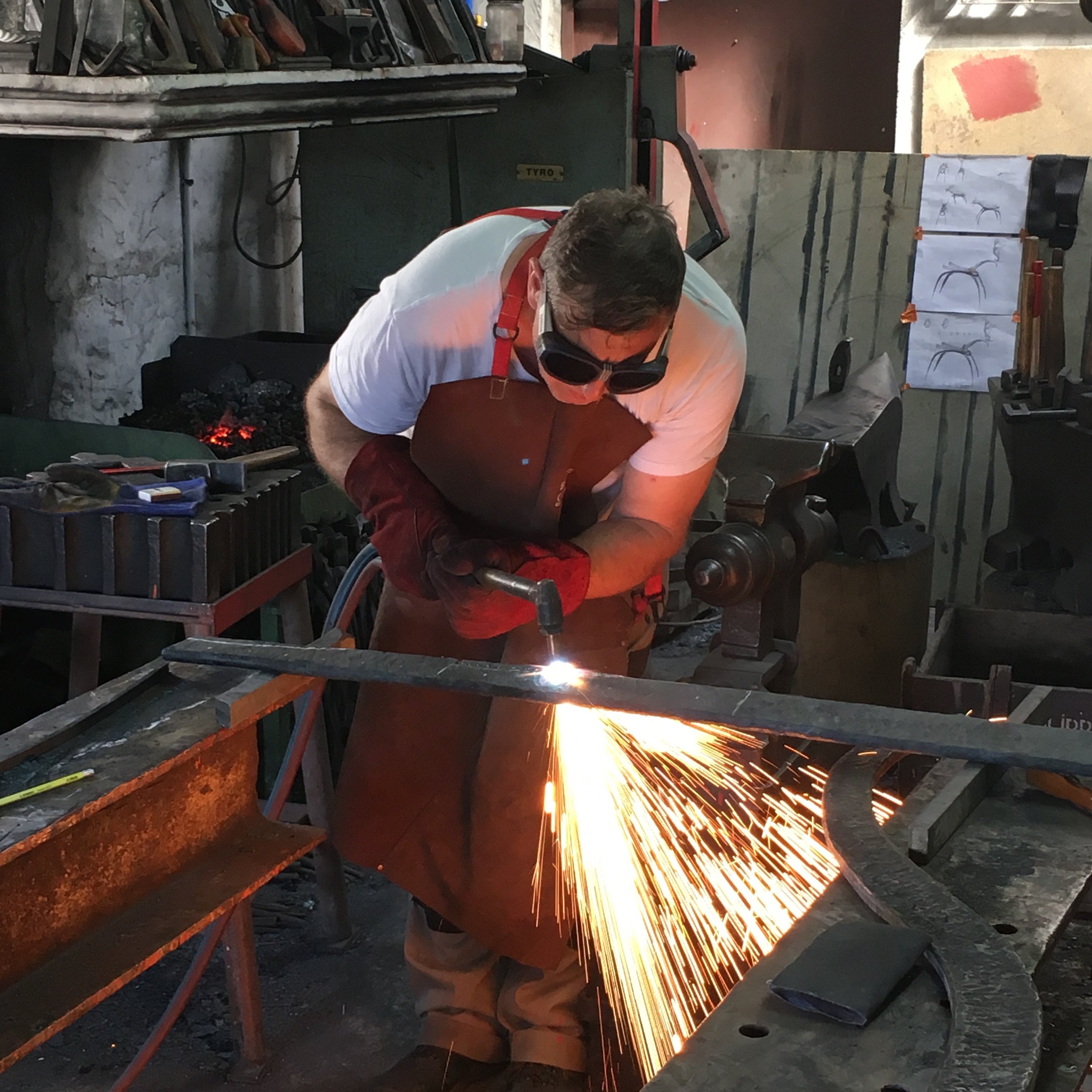
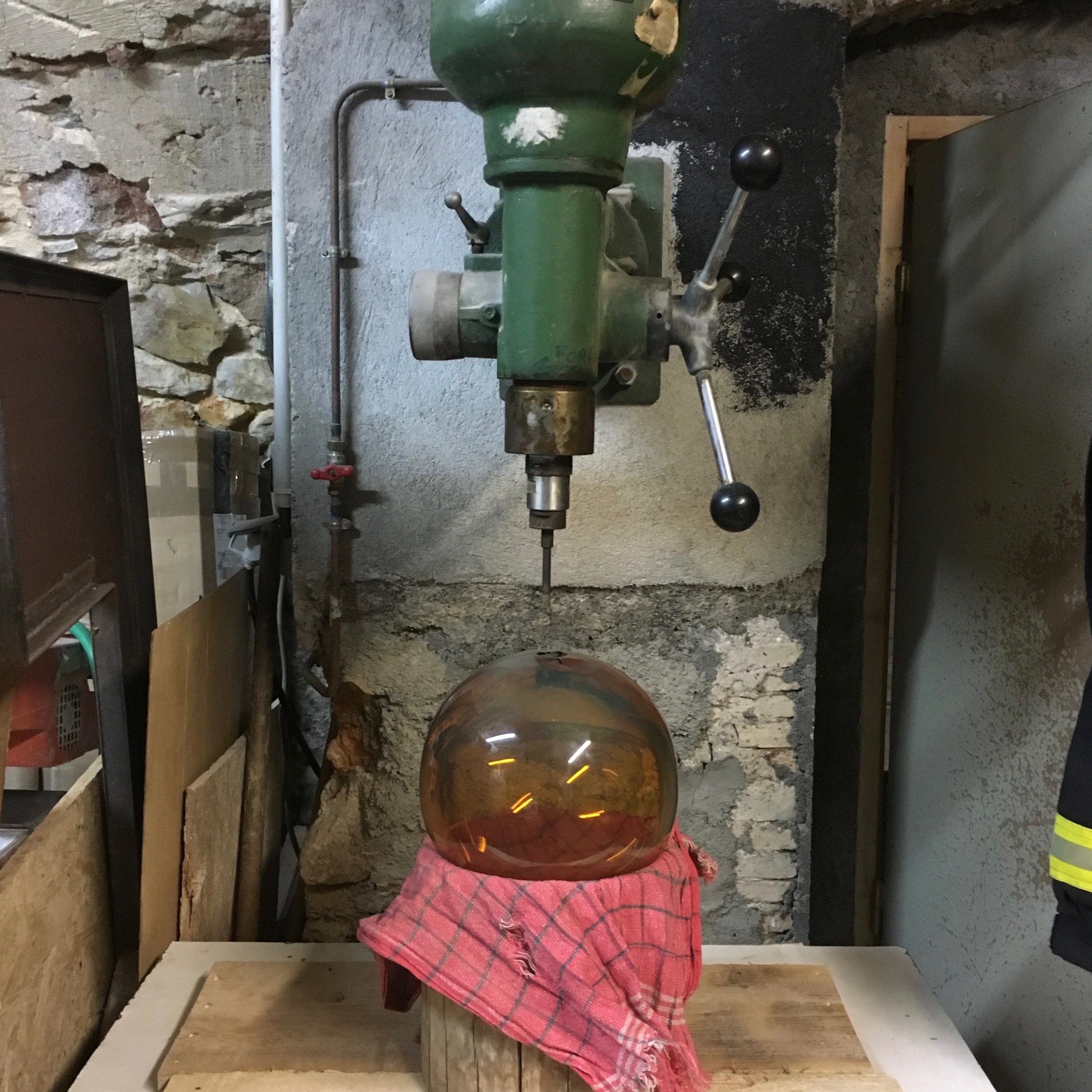

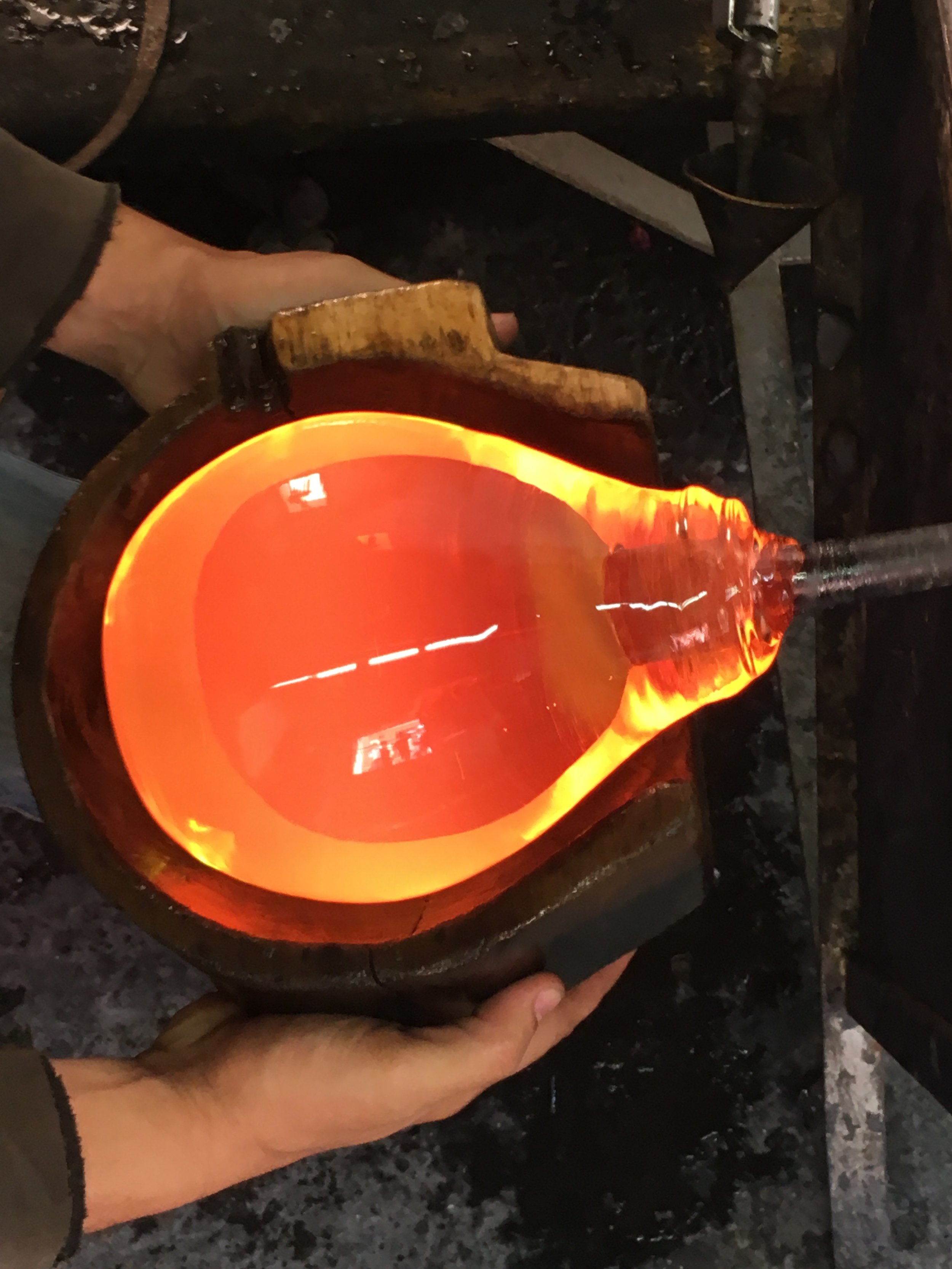
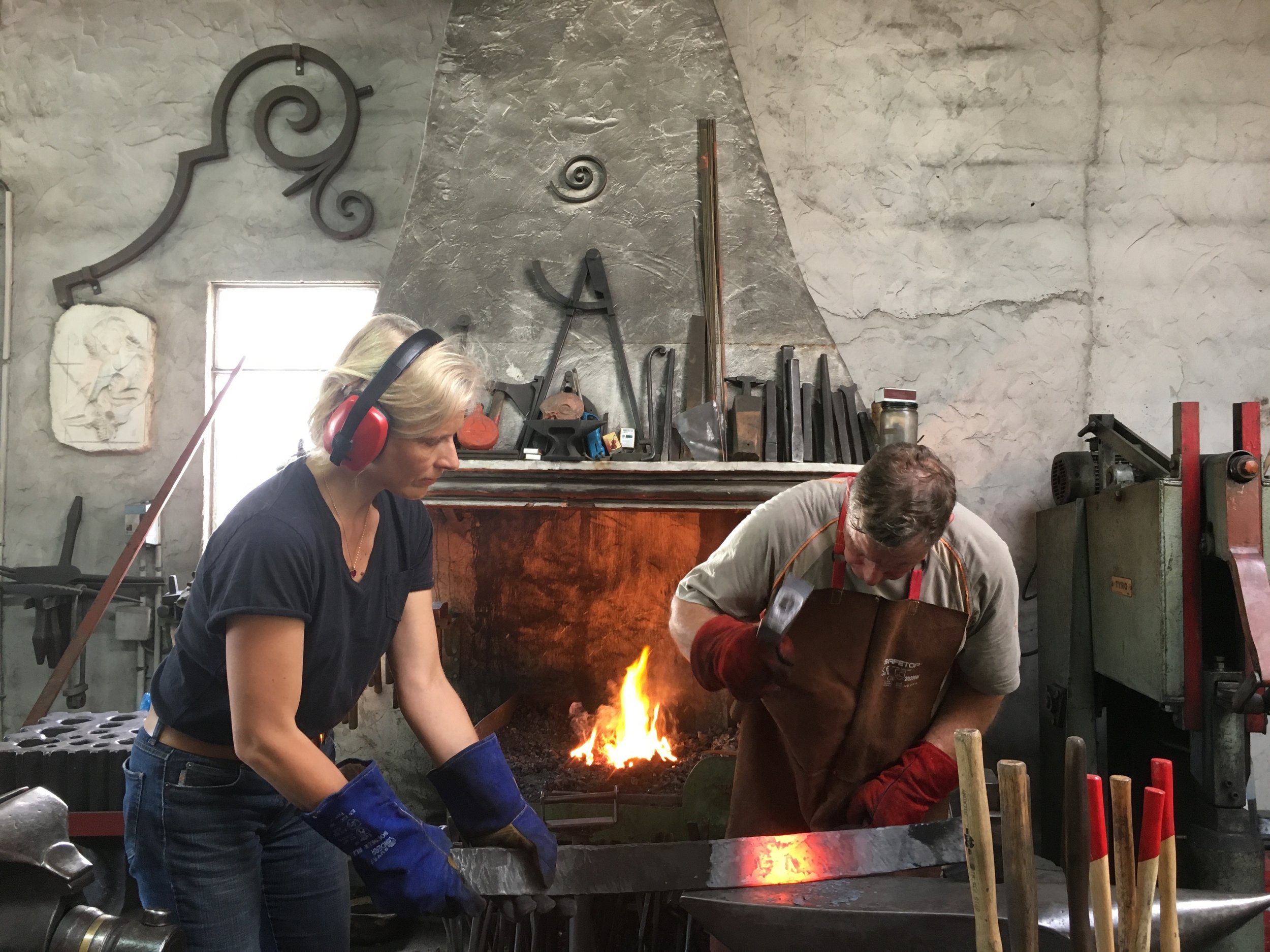

Symbolism of the deer
Within the extensive imagination of myths, legends and cosmogonies, there are animals that carry symbolic or archetypical characteristics: The deer’s antlers are one of the characteristics that have made the deer the figure of a spiritual superiority. Like a crown, the antlers grow beyond its body, bringing it closer to the sky and making it sacred. In many cultures, the deer is a symbol of spiritual authority. Every year the antlers fall off and grow again; therefore the animal is regarded a symbol of regeneration and fertility. In the Christian imagination, the deer is a symbol of piety, devotion and of God taking care of his children: men. The legend of Saint Eustace, for example, tells the story of the Roman general who, before becoming a saint, was out hunting and came across a magnificent and enormous deer. When Eustace looked at the animal’s eyes, the light of Christ shone out of them and the voice of God spoke to him through them. Placido, the Roman name for the saint, gave up hunting and became a Christian. In Celtic tradition there were two aspects of the deer: the feminine element, called Eilid in Gaelic, the female red deer, symbolising femininity, gentleness and grace. It was believed that the deer called to men from the kingdom of the fairies to free them from the trappings of the earthly world and taking them to the world of magic. Deer often turned into women in such legends in order to avoid being hunted. On the other hand, there was also Damh, the masculine element, which was equally related to the sacred and to forests, independence, purification and pride. The stag is the king of the forest, the protector of all other creatures. Antler headdresses were worn by shamans and other spiritual figures and leaders in various cultures. For the native tribes of North America, the deer was a messenger, an animal of power, and a totem representing sensitivity, intuition and gentleness. Among the deer community antlers have a physical meaning. They are projected forward so the male deer is able to use them to sense movement ahead and to protect the herd. The antlers are a form of antenna which also feel changes in the air and the coming of rain. They enable the deer to defend the herd while warning other animals not to come too close. With the male deer on guard the rest of the herd was able to browse without fear. Should the male deer indicate danger the herd responds in an instant. It is also their duty to take the herd to places of safety and to places where the young may be born UTA BROUET - SCULPTOR AND PRINTMAKER and food is readily available. Following the example of the deer, the leaders of tribes, by affixing antlers to their headdress, were given the power by the people to oversee their affairs and to physically protect them, to be ever on alert as to dangers and to warn the community. In the sculpture I want to create the antlers represent Theseus, the inspired ruler of Athens, and Oberon, the king of the fairies. Their task is to protect and to keep the order of society and balance in nature. They use the power of the sword, the sovereign powers and its laws and if necessary cunning strategies to impose their male dominance, in order to resolve states of conflict and prevent chaos.
Symbolism of glass
On the other side of the sea-saw balances a rich amber-coloured glass vessel, turning around an axis, filled with water, representing nature. Glass is an ancient material and also occurs naturally. It is of simple composition, formed by natural materials that are in flux. Glass is a melding of the traditional four elements, because through fire and air the silica earth element is made molten and transmuted into a liquid only to return to its earthly state as an apparent solid. It can be made to focus light or allow light to pass through invisibly or carry light waves great distances through tiny strands. Metaphysically, glass represents and carries the energies of transformation, merging of elements, rebirth, focus and communication. The colours of the glass bring the vibrations of those specific colour energies. As the object has the form of a vessel it acts as a receptacle. The female form embraces, protects, and gives life. Water, one of the four western classical elements symbolises passivity, adaptability, purity, fertility, healing and cleansing. It is associated with the emotional-intuitive of feminine aspect (in contrast to fire which is related to the masculine force). In metaphysics, water represents the flow of the collective mind – the collective unconscious. It teaches us, that our reality is forever changing, never to become what it once was. The glass vessel represents powerful Tatiana, the fairy queen, intuitive, generous, nurturing, sexual and resisting the wilful dominance of her husband. We can see at an instance that the balance between these two symbolic objects is very precarious, and forces will tip it one way or the other.
Fortuna et Virtu - origins
I would like to quote Dr. Manjeet Ramgotra, teaching Political Philosophy at SOAS University in London and researching on Machiavelli: “We find this dichotomy at the heart of Machiavelli’s thought. He depicts it as metaphor of FORTUNA et VIRTU, fortune and virtue. Virtu (latin, vir = man) represents the manliness of political power. The female Goddess Fortuna represents the forces of contingency, unruliness, the passionate, the unpredictable, change and time. This very gendered paradigm gets played out in both Machiavelli’s arguments about the virile prince who needs to dominate over fortuna who he depicts as a woman.”
Inspired by her research and Shakespeare’s most magical play I would like to name my sculpture Fortuna and Virtu, as the name also bears connection to ideas of eco-feminism. Eco-feminist theologian Rosemary Radford Ruether, has said a theology of domination over a feminized earth is one of the ways eco-catastrophe has been facilitated. Ruether points out, “Domination of women has provided a key link, both socially and symbolically, to the domination of earth, hence the tendency in patriarchal cultures to link women with earth, matter, and nature, while identifying males with sky, intellect, and transcendent spirit.”
I encourage empathy, modesty and the acceptance of diversity and constant transformation without attributing virtues and abilities to a specific gender. We all carry female and male energies in us.

